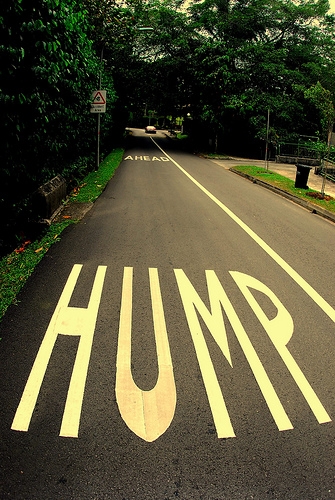
Speed bumps are raised areas of pavement designed to slow down drivers. Speed bumps can be controversial; although they can improve safety, they have many drawbacks. The process of slowing and diverting traffic is often called traffic calming.
Speed bumps are usually defined as the smaller raised areas usually found in parking lots. Speed bumps are generally 3 to 6 inches high. Speed bumps sometimes refer to speed humps, which are longer, rounded raised areas 3 to 4 inches high.
Speed bumps can effectively slow traffic speeds.
Speed bumps can also reduce the volume of traffic on a street by diverting traffic to other streets.
Slower drivers and less traffic can reduce accident rates.
Opponents of speed bumps argue that they are dangerous to bicyclists and motorcyclists, increase response times of emergency vehicles and increase vehicle emissions because of increased deceleration and acceleration.